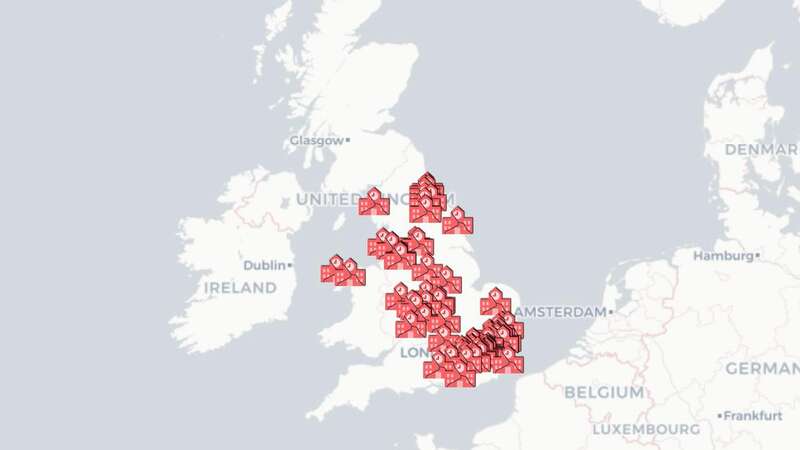
Our worrying interactive map pinpoints many of the UK's crumbling schools as the Reinforced Autoclaved Aerated Concrete crisis deepens.
The scale of the horrifying problem is brought to life with the list expected to grow in the weeks ahead with many schools in danger of collapse. A total of 156 were confirmed to be affected by Education Secretary Gillian Keegan in Parliament on Monday after dozens of buildings were closed in England and Wales.
The full list of schools has finally been published by the Department for Education but as more inspections are carried out, more and more are expected to be announced. Around 80 schools have been identified locally and in news reports as being among those affected, in a list compiled by the Press Association. RAAC is known to be present in more than 150 schools in England alone, and is prone to collapse, safety experts have warned.
At least four schools on this list applied for School Rebuilding Programme funding from the government last year, but only one received it, analysis by the Reach Data Unit has found. Problems with 'unsafe' RAAC concrete have been known about for decades, prompting warnings that the once-popular building material is now liable to collapse in schools across the country.
The outdated RAAC is weaker than normal concrete and can collapse without warning. Some pupils are already being told they will need to take pandemic-style remote lessons, while other headteachers have scrambled to find temporary facilities.
 Kids cowering in crumbling RAAC schools 'define 13 years of Tory rule'
Kids cowering in crumbling RAAC schools 'define 13 years of Tory rule'
Cockermouth School in Workington, Myton School in Warwick, Scalby School in Scarborough, and The Appleton School in Benfleet, Essex, all applied to the SRP in 2022, according to data from the Department for Education. Only Cockermouth School was successful though, while the other three were not selected.
The root of the problem goes back decades - with the substandard building material commonly used in hospitals and many civic buildings between the 1950s and 1970s. Some issues with RAAC have been known about for around forty years.
Today, unions have condemned ministers over a decision to axe a major rebuilding programme which would have covered at least 13 schools now found to have collapse-risk concrete. The Building Schools for the Future (BSF) programme was axed in 2010 in response to concerns over its cost and scope.
The general secretary of the Association of School and College Leaders (ASCL) union Geoff Barton said: “I think the nation’s parents will think this just reinforces a sense that we have got a Government that frankly doesn’t care, and hasn’t cared about education for many years.” He told BBC Radio 4’s Today that there were “all kinds of flaws” with the BSF programme, “but it was saying something important, that the nation’s schools needed to be refurbished”.
It comes as a Tory minister has admitted Rishi Sunak DID reject a bid to rebuild 200 schools a year as Chancellor - after Mr Sunak claimed it was "utterly wrong" to blame him for the dodgy concrete crisis. Schools chief Nick Gibb confirmed the Department for Education (DfE) had asked for cash to refurbish 150 more schools than they had been doing a year in 2021.
But the Treasury rejected the bid. It comes after a bombshell intervention from ex-top official Jonathan Slater, who said Mr Sunak rejected calls to repair more schools despite warnings from officials of a "critical risk to life" from dodgy school buildings.
The Prime Minister said it was "completely and utterly wrong" to blame him, adding: "One of the first things I did as Chancellor, in my first spending review in 2020, was to announce a new 10-year school re-building programme for 500 schools. Now that equates to about 50 schools a year, that will be refurbished or rebuilt.
"We put in a bid for 200, but what Rishi agreed to was to continue the rebuilding programme at 50 a year, consistent with what we’ve been doing since we came into office. Fifty school buildings a year is what the system can cope with, and of course we put in a bid for 200, but the Treasury then has to compare that bid with all the other priorities right across Whitehall."
Read more similar news:
Comments:
comments powered by Disqus
































